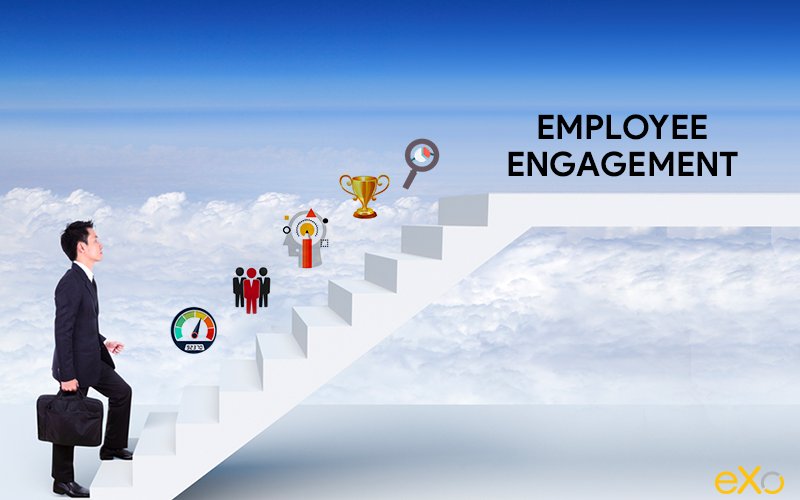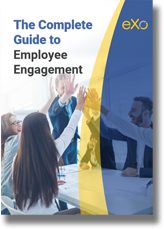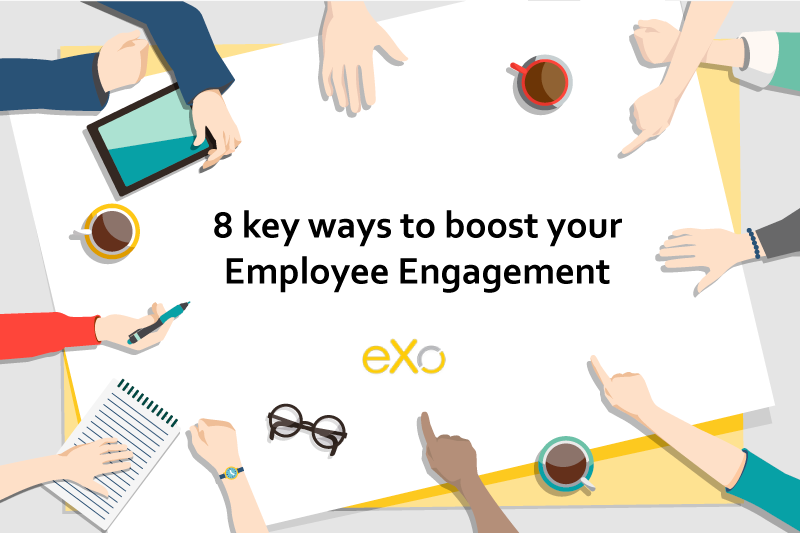
Content
1. Measure your current engagement / disengagement
The first step to tackling any complex issue is to analyse and measure your current situation—that will be your starting point. Once you have that, you can define your target, and the steps and time frame, necessary to reach that target.
Thus, you need to measure the current level of your employee engagement. And that, of course, is far from straightforward.
If you do a survey of your employees asking them to rate their engagement, you will probably end up with a high engagement level. Indeed, who would state that he/she is unengaged?
More accurate results can be achieved by using an independent party (consultant agency) to survey your workforce anonymously. Survey questions can be adapted to approach the issues of employee engagement indirectly, and then the results can be extrapolated.
This way of measuring engagement is difficult to use in practice; indeed, you wouldn’t survey your employees every three months to measure the level of progress. However, it provides an excellent comparison point for your other metrics.
An alternative or additional way of measuring employee engagement is to choose a set of KPIs indirectly related to employee engagement. Measurable variables such as voluntary turnover, number of sick days per employee, number of participations in transverse projects outside of normal reporting lines, and so on, can be excellent indicators of employee engagement. Focus on indicators that are relevant to your business and easy to measure continuously.
Of course, if you are operating within a digital workplace, technology can provide you with employee engagement indicators.
Once you have some metrics, it helps to choose the most relevant or to merge them into some form of employee engagement indicator that you can measure to evaluate your progress in time.
2. Find your stakeholders and assemble your team
Whatever your role in the organization, you obviously can’t evaluate employee experience single-handedly; you need someone to champion and lead the project. The human resources team are a natural candidate for this role, but they are not duty-bound to do so. Indeed, some organizations do not even have a dedicated HR team. The role could be performed by any team with enough transversal vision of the company and its employees.
Your employees need to be represented. Different groups might have different needs and different experiences with the company. Identifying stakeholders who are willing to provide feedback offers a huge advantage.
Finally, it helps to be open about your intentions. While it might raise your employees’ expectations, it would also send a positive message to the company. In particular, it is likely to foster empathy within the teams.

FREE WHITE PAPER
The Complete
Guide to
Employee Engagement
Guide to
Employee Engagement
There are many definitions for the concept of employee engagement out there.
3. Leverage your design thinking method to improve your employee experience
Your design thinking method, commonly used to reshape customer experience, adapts perfectly to employee experience. The core concept of this method is to put the user (the employee) at the heart of the process. Below are the steps to follow:
Put on your empathy hat
Empathy is the backbone of any successful employee experience. But what does it mean?
While considering how to improve your employee experience, put yourself in your employees’ shoes and consider things from their point of view. In the long run, try to build an empathic culture and encourage every one of your employees to show empathy towards their managers, their peers and their subordinates.
So start by empathizing with and understanding each of your employees, whatever their role is, and do your best to represent and take on board their needs, desires and expectations.
Consider the employee experience as a holistic journey
Significantly improving your employee experience is complex as it results from a multitude of factors. Instead of addressing your employees’ needs one by one, try viewing the employee experience as a holistic journey. Employee experience should be regarded as a federating concept, covering an employee’s entire range of interactions with the company.
As with customer experience, start by identifying all touchpoints where an employee comes into contact with your organization and by mapping the employee experience. Identify any areas of friction. List all problematic factors and their possible solutions, together with those areas in need of improvement.
Aim for consistency
Consistency throughout the journey is needed for a satisfactory employee experience: the company’s external brand and images should be consistent with its internal operations, recruiting promises need to be confirmed in practice, the company mission and operations should be aligned, messages from top managers and middle managers should not contradict each other, and so forth.
Model your employee experience with design thinking
Consider your employee as your customer. Once you know him/her and once you have mapped out his/her typical journey with your organization, define what services/solutions you, as an employer, can offer the employee, and for what cost/value. That is where ideas will emerge and flow from.
The best way of achieving quick results is to apply this method to the different touchpoints your employees have with your organization, such as physical and digital workplaces and organizational structure/hierarchy.
Adopt an agile approach
As with any ambitious project, and once again drawing inspiration from the customer experience, employee experience must be tested and improved.
Instead of spending years on ideation, theorizing and prioritizing, define your first service offering, put it in place and see how it works. By including all stakeholders early on, you increase your chances of identifying issues and quickly ensuring support.
The point is to get field feedback and take corrective action continuously, thus improving your service offering gradually over each iteration.
4. Put in place a motivation-reward loop
Analyse what type of motivation-reward mechanisms exist within your organization. Consider what happens when an average employee goes outside the box, displays a positive attitude, and so on; in order to do that, you’ll need to analyse several teams/experiences. In particular, it would be useful to compare best-performing teams vs less-performing teams, and teams from different offices or countries if that’s appropriate.
Ideate and find what can be improved. Aim to improve the link between the action and the recognition—and the frequency of the latter. Broaden your definition of recognition beyond monetary compensation.
Ideas may include: honour boards, management practices, team-building practices, a working-out-loud culture, breaking projects into actionable steps by adopting a flexible approach, and using technologies such as social networks and recognition software.
5. Measure your progress and repeat
This point has already been mentioned above, but bears repeating. Try to adopt a flexible approach to your employee engagement and both its pillars. Put an initial version of your ‘offer’ in place as quickly as possible, and iterate from there based on employee feedback and your measured KPIs, tracking your progress along the way.
That way, you’ll secure some quick wins (and enhance your own motivation loop :)) and you’ll also be able to correct your course of action if things don’t go as planned.
eXo Platform 6 Free Datasheet
Download the eXo Platform 6 Datasheet and
discover all the features and benefits
discover all the features and benefits
FAQs
What is employee engagement?
It’s the willingness of an employee to help his company progress. It is a positive behavior, which manifests itself by a strong involvement in his work and by a great motivation. This allows the company to evolve both in terms of its activity and on a human level.
How to Improve Employee Engagement in the Workplace?
- Ensure a strong corporate culture
- Ensure good relationship with management
- Foster good relationships between the colleagues
- Think about employee recognition
- Express meaning for work in your organization
- Make well-being and work/life balance your priority
- Allow more flexibility and autonomy
- Invest in skills development and training
➝ Find out how to improve employee engagement in the workplace
- Tags: Employee engagement, Tips & Tricks
4.9/5 - (55 votes)
I am the Chief Executive Officer of eXo Platform (the open source digital workplace platform), a company that I co-founded while in college and that I came back to after several years in the banking and consulting industry. I blog about modern work, about open-source and sovereignty issues. Occasionally, I also blog about my personal areas of interest, such as personal development, work–life balance, sustainability and gender equality.
Related posts
- All
- eXo
- Digital workplace
- Open source
- Internal communication
- Collaboration
- News
- intranet
- Future of work
- workplace
- Knowledge management
- Employee engagement
- Employee experience
- Employee productivity
- onboarding
- Employee recognition
- Change management
- Cartoon
- Digital transformation
- Infographic
- Remote work
- Sneak Peek
- Solutions
- Thought leadership
- Tips & Tricks
- Tutorial
- Uncategorized
Leave a Reply
( Your e-mail address will not be published)
Connexion
0 Comments
Commentaires en ligne
Afficher tous les commentaires


